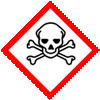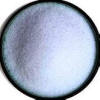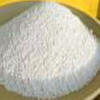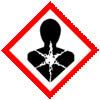Search for the supplies that you need here:
DMF Support and Documentations Available |
|||
 WHO-GMP Certified Good Manufacturing Practice Certified by World Health Organization |
 WC, Written Confirmation for Active Substance to be imported into European Union (EU). |
||
Barium Chloride Dihydrate SDS of Suppliers
Anmol Chemicals is a manufacturer supplier exporter of Barium Chloride Dihydrate and it offers materials as per IP BP EP Ph Eur USP NF JP FCC Food Grade as per the the latest monograph at best prices. Anmol Chemicals Group, established in 1976, is the pioneer manufacturer of Specialty Chemicals, Pharmaceutical Excipients, Some API, Food Chemicals in India. Anmol Chemicals Group has manufacturing facilities spread across Western India, representatives in Houston, Chicago USA and Dubai, UAE. We also have toll manufacturing units for processing chemicals in a few countries around the world. We make IP, BP, EP, USP, NF, Ph. Eur., JP, FCC or Food Grade, Analytical Reagent Grade, LR or Laboratory Reagent Grades and Pure Grades of various chemicals. All our items are analyzed to meet the required standards. We can supply the product in grams for your laboratory trial and in tons for your plant scale jobs.
We manufacture Bulk Drugs / API, Excipients, Pharmaceuticals (IP BP USP NF Ph Eur EP JP), Specialty Chemicals (Pure/Reagent), Mineral Fortifiers (FCC). Our manufacturing facility is FDA approved and GLP, cGMP, ISO9001, ISO14001, ISO/IEC 17025, ISO22000, FSSC 22000, ISO45001, FSSAI, Kosher, HALAL, COPP, WHO-GMP certified and Written Confirmation (WC) is available. Solid materials can be customized for particle size, shape, and bulk density. We observe WHO Good Manufacturing Practices and Good Laboratory Practices. We are a government-recognized STAR Export House and "Authorised Economic Operator (AEO)" per Indian Customs.
All technical documents and DMF support available.
CAS No.: 10361-37-2, EINECS: 233-788-1, Molecular Weight: 208.31, Chemical Formula: BaCl2
CAS No.: 10326-37-9, EINECS: 233-788-1, Molecular Weight: 244.26, Chemical Formula: BaCl2.2H2O
Barium Chloride Dihydrate & Anhydrous Specifications of Manufacturers
Barium Chloride Anhydrous MSDS of Manufacturers
Barium Chloride Dihydrate SDS, Safety Data Sheet
MSDS Sheet, Material Safety Data Sheet
1. Product Identification
Product Name & Other Names: Barium Dichloride Dihydrate or Barium Di Chloride Dihydrate
CAS No.: 10326-27-9
EINECS: EC Number: 233-788-1
Molecular Weight: 244.26
Chemical Formula: BaCl2-2H2O (Barium Chloride Dihydrate)
Relevant uses and uses advised against (if any): Industrial use only.
Supplier: As per letterhead.
2. Hazards Identification
GHS, Globally Harmonized System Classification in accordance with 29 CFR 1910
Classification according to Regulation (EC) No 1272/2008
Acute toxicity, Oral: Category 3
Serious eye damage/eye irritation Category 2A
Acute toxicity, Inhalation: Category 4
Acute aquatic toxicity: Category 3
Labeling according Regulation (EC) No 1272/2008
GHS Label Elements  Toxic |
GHS Label Elements |
Signal Words: Danger
Hazard Statements:
H301: Toxic if swallowed.
H319: Causes serious eye irritation.
H332: Harmful if inhaled.
H402: Harmful to aquatic life.
Hazards not otherwise classified (HNOC):
May causes mild skin irritation
May cause mild respiratory irritation
Precautionary Statements:
P301+P310: IF SWALLOWED: Immediately call a POSION CENTER or doctor/physician.
P273: Avoid release to the environment.
P260: Do not breathe dust/fume/gas/mist/vapors/spray.
P262: Do not get in eyes, on skin, or on clothing.
P271: Use only outdoors or in a well-ventilated area.
P264: Wash contaminated parts thoroughly after handling.
P270: Do not eat, drink or smoke when using this product.
P271: Use only outdoors or in a well-ventilated area.
P:273: Avoid release to the environment.
P280: Wear protective gloves/protective clothing/eye protection/face protection.
P312: Call a POISON CENTER or doctor/physician if you feel unwell.
P314: Get medical advice/attention if you feel unwell.
P302+352: IF ON SKIN: Wash with plenty of soap and water.
P304+P340: IF INHALED: Remove victim to fresh air and keep at rest in a position comfortable for breathing.
P305+351+338: IF IN EYES: Rinse cautiously with water for several minutes. P337+P313: If eye irritation persists get medical advice/attention.
Remove contact lenses if present and easy to do – continue rinsing.
P330: Rinse mouth.
P360: Rinse immediately contaminated clothing and skin with plenty of water before removing clothes.
P403+P404: Store in well-ventilated place. Keep container tightly closed.
P405: Store locked up.
P501: Dispose of contents/container in accordance with local/national regulation.
Classification according to EU Directives 67/548/EEC or 1999/45/EC:
Hazard Symbol:
T = toxic
Risk Phrases:
R 20 Harmful by inhalation.
R 25 Toxic if swallowed.
3. Composition/Information on Ingredients
Product Name & Other Names: Barium Dichloride Dihydrate or Barium Di Chloride Dihydrate
CAS No.: 10326-27-9
EINECS: EC Number: 233-788-1
4. First Aid Measures
Always seek medical attention after first aid measures are provided.
Inhalation: Remove to fresh air. If not breathing, give artificial respiration. If breathing is difficult, give oxygen. Get medical attention.
Ingestion: Never give anything by mouth to an unconscious person. Get medical attention.
Skin Contact: Wipe off excess material from skin then immediately flush skin with plenty of water for at least 15 minutes. Remove contaminated clothing and shoes. Get medical attention. Wash clothing before reuse. Thoroughly clean shoes before reuse.
Eye Contact: Immediately flush eyes with plenty of water for at least 15 minutes, lifting lower and upper eyelids occasionally. Get medical attention immediately.
Note to Physician: Symptomatic and supportive treatment is recommended. Monitor patients with significant ingestion for respiratory, cardiovascular, and blood pressure status. Watch for cardiac arrhythmias, respiratory failure due to flaccid paralysis of respiratory muscles, pulmonary edema, vocal cord paralysis, severe hypertension, and late effect kidney failure. Acute barium poisoning results in hypokalemia. The administration of fluids containing dilute concentrations of potassium salts may be indicated.
5. Fire Fighting Measures
Flammability of the Product: Non-flammable.
Auto-Ignition Temperature: Not applicable.
Products of Combustion: Not available.
Fire: Not considered to be a fire hazard.
Explosion: Barium Chloride is not considered to be an explosion hazard.
Fire Extinguishing Media: Use any means suitable for extinguishing surrounding fire.
Special Information: In the event of a fire, wear full protective clothing and NIOSH-approved self-contained breathing apparatus with full face piece operated in the pressure demand or other positive pressure mode. At high temperatures or when moistened under fire conditions, it may produce toxic or irritating fumes.
6. Accidental Release Measures
Personal precautions, protective equipment, and emergency procedures: Ventilate area of leak or spill. Avoid breathing dust/fumes/gas/mist/vapors/spray. Use individual protective equipment (waterproof boots, suitable protective clothing, safety glasses, etc.). Restrict unprotected personnel from the area. Prevent any contact with hot surfaces. Do not approach facing the wind. Do not touch the spilled material.
Environmental precautions: Do not let the product enter drains, soil, or water sources.
Methods and materials used for containment Cleanup procedures and Storage:
Small Spill: Avoid dust formation. Avoid breathing dust. Ensure adequate ventilation. Use appropriate tools to put the spilled solid in a convenient waste disposal container. Finish cleaning by spreading water on the contaminated surface and dispose of according to local and regional authority requirements.
Large Spill: It is a poisonous solid. Avoid touching the spilled material. Contain spilled material. Cover with an inert, non-combustible absorbent material, (e.g. sand, earth, diatomaceous earth, vermiculite). Vacuum or sweep-up and remove to an approved disposal container.
7. Handling and Storage
Toxic! Do not ingest. Do not breathe dust. Wear suitable protective clothing. In case of insufficient ventilation, wear suitable respiratory equipment.
Precautions for safe handling: Apply according to good manufacturing and industrial hygiene practices. Ensure proper ventilation. Provide appropriate exhaust ventilation at places where dust is formed. Wash thoroughly after handling. Do not drink, eat, or smoke while handling. Avoid contact with skin, eyes, and clothing. Minimize dust generation. Avoid breathing dust/fumes/gas/mist/vapors/spray. Avoid contact with eyes, skin, and clothing. Keep container tightly closed. Avoid ingestion and inhalation. Use individual protective equipment (waterproof boots, suitable protective clothing, safety glasses, etc.). Prevent any contact with hot surfaces.
Conditions for safe storage, including any incompatibilities: Store in cool, dry, and ventilated area away from heat sources and protected from sunlight in tightly closed original container. Keep air contact to a minimum. Store protected from heat, sparks and ignition sources and incompatible materials. Avoid contact with skin and eyes. Avoid inhalation of dust/mist/vapor. Do not store with incompatible materials like strong oxidizing agents, bromine trifluoride, 2 -furan percarboxylic acid. Moist barium chloride and concentrated solutions can corrode steel. When exposed to the atmosphere, it will absorb water and form a solution.
8. Exposure Controls/Personal Protection
Airborne Exposure Limits: Exposure Limit (PEL) is 0.5 mg (Ba)/m3.
Ventilation System: A system of local and/or general exhaust is recommended to keep employee exposures as low as possible. Local exhaust ventilation is generally preferred because it can control the emissions of the contaminant at its source, preventing dispersion of it into the general work area.
Personal Respirators (NIOSH Approved): For conditions of use where exposure to dust or mist is apparent and engineering controls are not feasible, a particulate respirator may be worn. For emergencies or instances where the exposure levels are not known, use a full-face positive-pressure, air-supplied respirator.
Skin Protection: Wear protective gloves and clean body-covering clothing.
Eye Protection: Use chemical safety goggles and/or full face shield where dusting or splashing of solutions is possible. Maintain eye wash fountain and quick-drench facilities in work area.
Other Control Measures: Maintain good housekeeping in work area. Dust deposits on floors and other surfaces may pick up moisture and cause the surfaces to become slippery and present safety hazards. Handle in accordance with good industrial hygiene and safety practice. Wash hands after handling.
9. Physical and Chemical Properties
Appearance: White crystals or powder or granules
Odor: It is odorless.
Odor threshold: Not available.
pH: 5.0 - 8 at 5% solution at 25C (77F)
Relative density: Not available.
Boiling Point: 1560C.
Melting Point: 962C.
Flash point: Not available.
Auto-ignition temperature: Not available.
Decomposition temperature: Not available.
Upper/lower flammability or explosive limits: Not available.
Vapor pressure: Not available.
Vapor density: Not available.
Evaporation rate: Not available.
Flammability (solid, gas): Not available.
Partition coefficient: n-octanol/water: Not available.
Solubility: It is freely soluble in water.
Viscosity: Not available.
Molecular formula: BaCl2-2H2O
Molecular weight: 244.26
10. Stability and Reactivity
Stability: It is stable under ordinary conditions of use and storage.
Hazardous Decomposition Products: It emits toxic chlorine fumes when heated to decomposition. It may form barium oxide and hydrogen chloride and chlorine.
Hazardous Polymerization: Will not occur.
Incompatibilities: Strong oxidizing agents, bromine trifluoride, 2 -furan percarboxylic acid.
Conditions to Avoid: Incompatibles.
11. Toxicological Information
Acute toxicity
Toxic, and may be fatal, if swallowed. Chronic exposure may cause damage to a variety of body organs. Harmful if inhaled. Typical TLV/TWA 0.5 mg m-3.
Toxicity data for anhydrous material
ORL-RAT LD50 118 mg kg-1
SCU-RAT LD50 178 mg kg-1
IPR-MUS LD50 54 mg kg-1
IVN-MUS LD50 12 mg kg-1
ORL-MAM LD50 398 mg kg-1
Carcinogenic Effects: No component of this product present at levels greater than or equal to 0.1% is identified as probable, possible or confirmed human carcinogen by IARC.
Mutagenic Effects: Not available.
Teratogenic Effects: Not available.
Developmental Toxicity: Not available.
12. Ecological Information
Toxicity data for anhydrous material
Toxicity to fish: static test LC50 - Danio rerio (zebra fish) - > 174 mg/l - 96 h
Toxicity to daphnia and other aquatic invertebrates: EC50 - Daphnia magna (Water flea) - 14,5 mg/l - 48 h
Toxicity to algae: Growth inhibition EC50 - Pseudokirchneriella subcapitata (green algae) - > 100 mg/l - 72 h
Toxicity to bacteria: Respiration inhibition EC50 - Sludge Treatment - > 1.000 mg/l - 3 h
Environmental Toxicity: Barium chloride accumulates in plants when it exceeds calcium and magnesium levels in soil. It is also toxic to fish.
Results of PBT and vPvB assessment: This substance/mixture contains no components considered to be either persistent, bioaccumulative and toxic (PBT), or very persistent and very bioaccumulative (vPvB) at levels of 0.1% or higher.
Toxicity of the Products of Biodegradation: The products of degradation are less toxic than the product itself.
13. Disposal Considerations
Whatever cannot be saved for recovery or recycling should be managed in an appropriate and approved waste disposal facility. Processing use or contamination of this product may change the waste management options. State and local disposal regulations may differ from federal disposal regulations. Dispose of container and unused contents in accordance with federal, state, and local requirements.
14. Transport Information
US DOT, ADR/RID, IMDG & Canada TDG Classification: UN-Number: 1564 CLASS 6.1: Poisonous material. Packing group: III
Identification: Barium Compound, n.o.s. (Barium Chloride) UNNA: 1564 PG: III
Special Provisions for Transport:
IATA/ICAO
UN-Number: 1564 Class: 6.1 Packing group: III
Proper shipping name: Barium compound, n.o.s.
15. Regulatory Information
USA:
SARA 302 Components: No chemicals in this material are subject to the reporting requirements of SARA Title III, Section 302.
SARA Codes
CAS # 10326-27-9: immediate, delayed.
CAS # 10361-37-2: immediate, delayed.
SARA 313 Components: This material contains Barium chloride dihydrate (listed as Barium compounds, n.o.s.), 99+%, (CAS# 10326-27-9) which is subject to the reporting requirements of Section 313 of SARA Title III and 40 CFR Part 373.
SARA 311/312 Hazards: Acute Health Hazard. Chronic Health Hazard.
California Prop. 65 Components: This product does not contain any chemicals known to State of California to cause cancer, birth defects, or any other reproductive harm.
Section 16 - Additional Information
European Labeling in Accordance with EC Directives:
H301: Toxic if swallowed.
H319: Causes serious eye irritation.
H332: Harmful if inhaled.
H402: Harmful to aquatic life.
Hazard Symbol:
T = toxic
Risk Phrases:
R 25 Toxic if swallowed.
R 20 Harmful by inhalation.
DISCLAIMER: The information and recommendations set forth herein (hereinafter "Information") are presented in good faith and believed correct as of the date hereof. It is compiled from various sources and it is not necessarily all inclusive nor fully adequate in every circumstance. In addition, these suggestions should not be confused with nor followed in violation of applicable laws, regulations, rules or insurance requirements applicable. This MSDS sheet is intended only as a guide to the appropriate precautionary handling of the material by a properly trained person using this product. Individuals receiving the information must exercise their independent judgment in determining its appropriateness for a particular purpose.



Manufacturers
ANMOL CHEMICALS
Now maturing as Anmol Chemicals Private Limited
Representatives in Houston, Chicago and New York, USA
TEL: (OFF) +91 22 23726950, +91 22 23774610, +91 22 23723564
Taloja Navi Mumbai, INDIA
e-mail: info@anmol.org
Copyright and Usual Disclaimer is Applicable
Last updated
23-feb-24
Exporters to USA, Canada, UAE, Kwait, Qatar, Gautemala, Tunisia, Europe, South Africa, Bangladesh, Sri Lanka, Tanzania, Kenya, Egypt, Iraq, Turkey, Israel, Vietnak, Nigeria, Uganda, Brazil, Chile, Argentina, Dubai, UAE, Saudi Arabia, Cameroon, Mexico, Brazil, Chile, Argentina, Korea, Thailand, Malaysia, Indonesia, Jakarta, Australia, China, Germany, France, etc.
Representatives in New York, Houston - Texas, Chicago - Illinois, Los Angeles.
All products are Sold for Industrial Use only. No other use is permitted.
Fast Selling IP BP Ph Eur EP USP NF JP Analytical Reagent FCC Food Grades of Chemicals by Anmol Chemicals
Ammonium Persulfate --- Acetic Acid Glacial --- Aluminum Chloride --- Ammonium bicarbonate --- Benzyl Alcohol --- Butylated Hydroxyanisole --- Butylated Hydroxytoluene --- Boric Acid --- Calcium Butyrate --- Calcium Chloride --- Calcium Hydroxide --- Calcium Lactobionate --- Calcium Saccharate --- Carbamide Peroxide --- Calcium Oxide --- Calcium Sulfate --- Chromic Chloride --- Fumaric Acid --- Magnesium Butyrate --- Magnesium Chloride --- Magnesium Sulfate --- Malic Acid --- Maleic Acid --- Manganese Chloride --- Manganese Sulfate --- Octyldodecanol --- Oleic acid --- Phenylethyl Alcohol --- Propylene Carbonate --- Potassium Hydroxide Pellets --- Potassium Alum --- Selenious Acid --- Sodium Acetate --- Sodium Bromate --- Sodium Selenite --- Sodium Perborate --- Sodium Hydroxide --- Sodium Sulphate --- Sodium Sulfide --- Sodium Thiosulfate --- Urea --- Zinc Chloride --- Zinc Sulphate ---





















